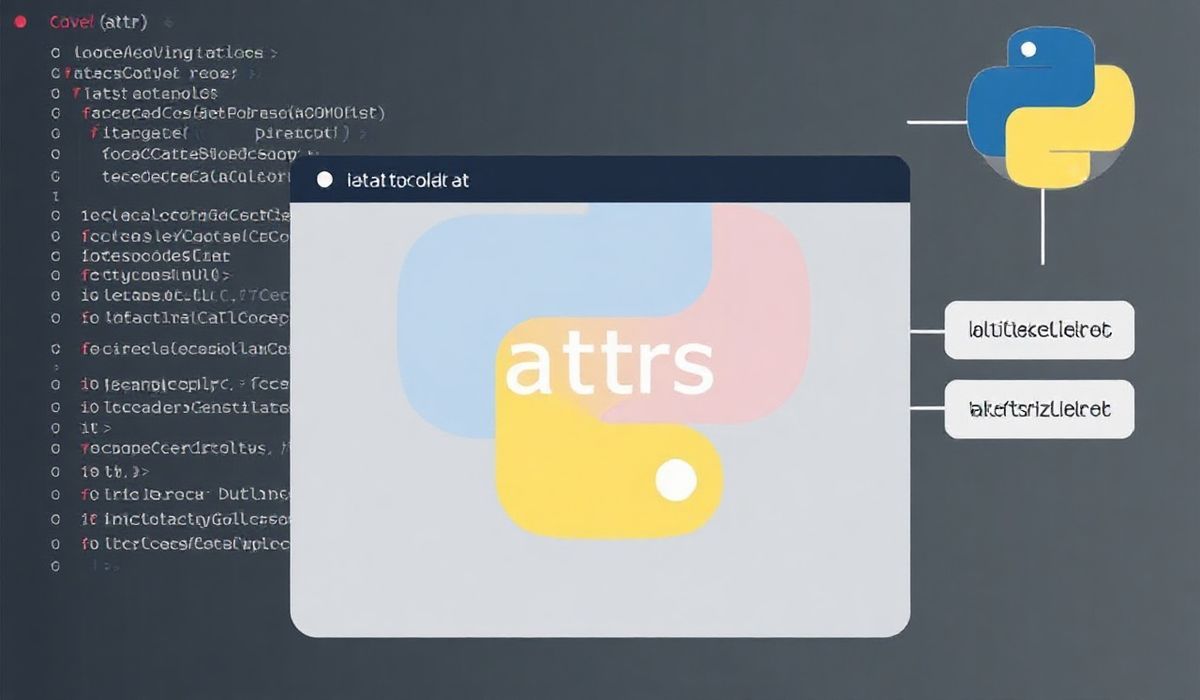Getting Started with Python attrs
The attrs library is a powerful and flexible Python library designed to simplify the creation and management of classes. By providing succinct declarations for attributes and enhancing readability, attrs is a go-to tool for modern Python developers. In this guide, we will explore its APIs with practical examples, ensuring that your code becomes both concise and maintainable.
What is attrs?
At its core, attrs helps by automating many boilerplate tasks that come with defining classes. It automatically adds common methods such as __init__, __repr__, __eq__, and more.
Installation
Installing attrs is simple. Use pip:
pip install attrs
Basic Usage
To define a class with attrs, you use the @attr.s decorator:
import attr
@attr.s
class Person:
name = attr.ib()
age = attr.ib()
# Usage
person = Person(name="Alice", age=30)
print(person) # Output: Person(name='Alice', age=30)
Advanced APIs in attrs
Default Values
You can specify default values for attributes:
@attr.s
class Person:
name = attr.ib(default="John Doe")
age = attr.ib(default=25)
person = Person()
print(person) # Output: Person(name='John Doe', age=25)
Attribute Validation
Validation of attribute values is straightforward with attrs:
def is_positive(value):
if value <= 0:
raise ValueError(f"Value must be positive, got {value}")
@attr.s
class Product:
price = attr.ib(validator=is_positive)
product = Product(price=100) # This works
# product = Product(price=-5) # Raises ValueError
Factory Functions for Defaults
For mutable default values like lists, it's better to use factories:
@attr.s
class Basket:
items = attr.ib(factory=list)
basket = Basket()
basket.items.append('apple')
print(basket.items) # Output: ['apple']
Converting to Dictionaries
Classes can easily be converted to dictionaries using asdict:
from attr import asdict
person = Person(name="Alice", age=30)
print(asdict(person)) # Output: {'name': 'Alice', 'age': 30}
Frozen Classes
If you need immutable classes, you can use the frozen=True argument:
@attr.s(frozen=True)
class ImmutablePerson:
name = attr.ib()
age = attr.ib()
person = ImmutablePerson(name="Bob", age=40)
# person.age = 41 # Raises AttributeError
Optional Attributes
Using optional attributes is simple with the attrs library:
from typing import Optional
@attr.s
class Book:
title = attr.ib()
subtitle = attr.ib(default=None, type=Optional[str])
book = Book(title="Python Programming")
print(book.subtitle) # Output: None
Integrating with Type Annotations
attrs supports type annotations out of the box:
@attr.s
class Car:
brand: str = attr.ib()
year: int = attr.ib()
car = Car(brand="Toyota", year=2020)
print(car) # Output: Car(brand='Toyota', year=2020)
Creating a Simple App with attrs
Let’s build a simple inventory application using attrs. It will manage products and orders.
Data Models
import attr
@attr.s
class Product:
name = attr.ib()
price = attr.ib(validator=lambda _, __, val: val > 0)
@attr.s
class Order:
products = attr.ib(factory=list)
def total_amount(self):
return sum(p.price for p in self.products)
Using the App
# Sample usage
prod1 = Product(name="Laptop", price=999.99)
prod2 = Product(name="Mouse", price=25.50)
order = Order(products=[prod1, prod2])
print(f"Total Order Amount: ${order.total_amount()}") # Output: Total Order Amount: $1025.49
Conclusion
The attrs library simplifies class management in Python while maintaining flexibility and elegance. Whether it's enforcing validation, handling defaults, or generating immutable classes, attrs provides it all. By using attrs, Python developers can focus on core functionality rather than boilerplate code. Try it today and experience the productivity boost!




